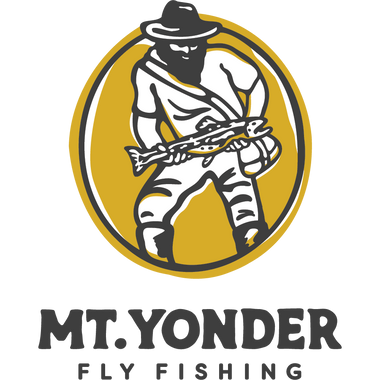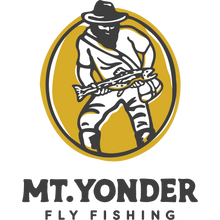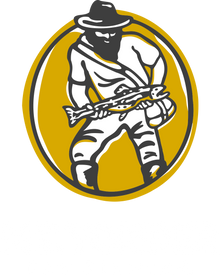Everything About Fly Fishing But Were Afraid to Ask: Beginner’s Guide
What's the Deal with Fly Fishing?
Fly fishing: the misunderstood, mystifying, and often intimidating world of whippy rods, invisible flies, and graceful casts. To the untrained eye, it can look like some sort of interpretive mid-stream yoga or a tangled disaster waiting to happen. So, what’s the deal with fly fishing? Let’s break it down, demystify the myths, and show you why fly fishing is much more approachable—and rewarding—than you might think.
What Makes Fly Fishing So Different?
At its core, fly fishing is simply another way to catch fish. Unlike conventional fishing, where a weighted lure is cast with lightweight line, fly fishing flips the script. In fly fishing:
- The fly line is weighted, and the nearly weightless fly (your “bait”) is carried by the energy of the cast.
- Fly rods are longer, more flexible, and designed to transfer energy smoothly into the line.
- Presentation is everything—you're not just tossing bait; you're imitating insects, baitfish, or other food sources naturally.
The mechanics may sound complicated, but with a little practice, casting a fly rod becomes second nature. And let’s be honest—it looks really cool once you get the hang of it.
Is Fly Fishing Only for Trout?
Not at all! While trout are the poster child of fly fishing, they’re just the tip of the iceberg. Fly fishing can be used to target any species in water depths of around 20 feet or less. Some of the fish you can catch on the fly include:
- Freshwater Species: Bass (smallmouth and largemouth), panfish, carp, and pike.
- Saltwater Species: Redfish, snook, bonefish, tarpon, and even sharks.
- Exotics: If you're ambitious, you can target open-water species like billfish or even tuna!
Fly fishing’s versatility is one of its greatest appeals. Whether you’re on a tiny mountain stream chasing brook trout or casting to stripers in the surf, the principles remain the same: match the hatch (or bait), cast well, and hang on for the fight.
Why Do People Love Fly Fishing?
Fly fishing is about so much more than catching fish. Here’s why so many people fall in love with it:
-
A Deep Connection to Nature
Fly fishing puts you in breathtaking places: clear mountain streams, remote saltwater flats, and lush riverbanks teeming with life. It’s a sport that forces you to slow down and soak in the scenery. -
The Challenge
Perfecting your cast, selecting the right fly, and presenting it naturally to a fish takes skill, patience, and practice. That challenge is part of the fun—it’s endlessly rewarding. -
Observation and Strategy
Fly fishing is like solving a puzzle. You have to read the water, watch the fish, and figure out what they’re feeding on. Each cast becomes a calculated decision. -
The Art of the Fly
Many fly anglers tie their own flies, adding a creative and personal touch to their craft. Catching a fish on a fly you tied yourself? That’s next-level satisfaction. -
The Community
Fly fishing connects you with like-minded individuals who share a passion for the water, the fish, and the stories.
What Gear Do You Need to Get Started?
Getting started with fly fishing doesn’t have to break the bank. Here’s what you need:
-
Fly Rod and Reel
- For trout: A 9-foot, 5-weight rod is versatile and beginner-friendly.
- For bass: A 6-8 weight rod handles heavier flies and bigger fish.
-
Fly Line
- Choose a line that matches the weight of your rod. Floating lines are great for beginners.
-
Leaders and Tippet
- These are the nearly invisible connections between your fly line and your fly. Start with a 9-foot tapered leader and tippet for trout fishing.
-
Flies
- Basic patterns like Elk Hair Caddis (dry fly), Pheasant Tail (nymph), and Woolly Bugger (streamer) cover a wide range of situations.
-
Waders and Boots
- Waders keep you dry in streams and rivers. Look for comfortable, durable options that match your budget.
-
Accessories
- Must-haves include nippers, forceps, a fly box, and polarized sunglasses to cut glare and spot fish.
Where Should You Start Fly Fishing?
One of the best things about fly fishing is that it can be done almost anywhere. Here are some regional highlights:
- North Carolina: The Tuckasegee, French Broad, and New Rivers offer world-class trout and bass fishing in stunning mountain settings. Wade or float—you can’t go wrong.
- Tennessee: The South Holston and Watauga Rivers are famous for their dry fly action and trophy wild browns.
- South Carolina: The Broad and Congaree Rivers provide exciting opportunities for bass, stripers, and more.
Start small—city ponds, nearby streams, or even backyard practice casts are great for beginners. Fly fishing isn’t about where you start; it’s about the journey.
Why Mt. Yonder is Your Fly Fishing Partner
At Mt. Yonder, we believe fly fishing is for everyone, from first-timers to seasoned anglers. Our guides are passionate about teaching, exploring, and helping you make the most of your time on the water. Whether you want to master dry fly fishing, target smallmouth on a scenic float, or experience trophy trout waters, we’ll tailor your trip to your goals.
Here’s what sets us apart:
- Local Knowledge: We fish the best waters in North Carolina, South Carolina, and Tennessee.
- Expert Guides: We’re passionate anglers who love sharing our craft.
- Personalized Experiences: From gear recommendations to fishing styles, we’ll ensure your trip meets your needs.
Fly Fishing: It’s About More Than Fish
At its heart, fly fishing is about the moments: the perfect cast, the rise of a trout to your fly, the connection to the water, and the stories that come from the experience. It’s not always easy, but that’s part of what makes it so rewarding.
So, grab a rod, hit the water, and find out why fly fishing is one of the most beloved pastimes in the world. Whether you’re looking to learn, laugh, or simply escape, we promise: you’ll be hooked.
Ready to start your fly fishing adventure? Book a trip with Mt. Yonder today and discover what you’ve been missing!




Leave a comment